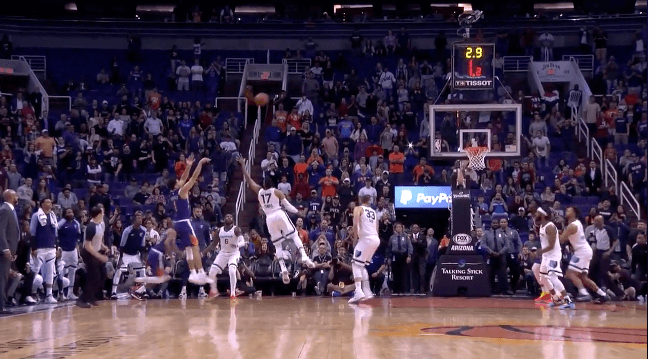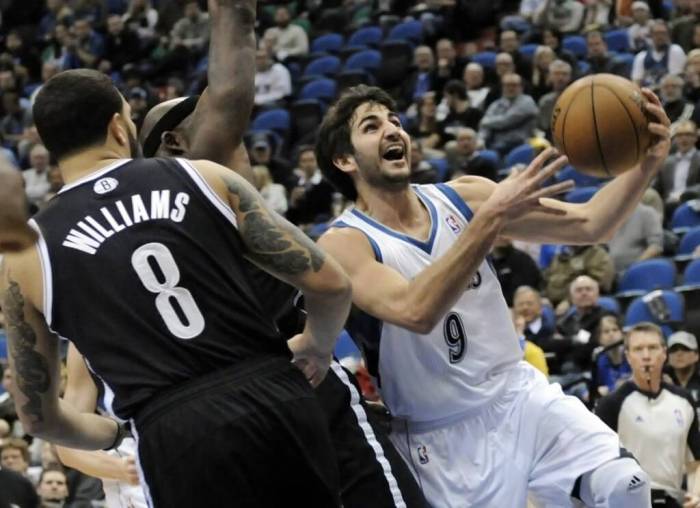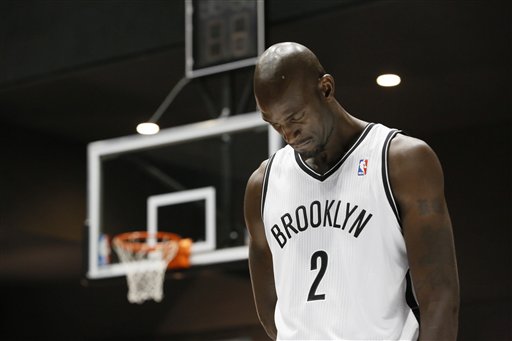Meet Kevin Garnett. Unless you haven’t been following hoops for the past 15 years – and why would you be on Nets Are Scorching if you didn’t have, at least, a passing interest in the game James Naismith invented – you’re probably familiar with KG. He’s one of the best frontcourt players of this generation, and while at age 36, he’s clearly in the twilight of his career, which began when he was a wee 19-year-old drafted out of high school by the Minnesota Timberwolves in 1994, Garnett proved in 2011-12 he can still bring it at an elite level.
Garnett is the total package for a PF. A 14-time all-star, who can score in the post and from outside (he’s shot 44 percent or better on long twos over the past five years). He’s an effective pick and roll player, shooting 52.6 percent as the roll man and averaging 1.04 points per possession in those sets, good for 47th in the NBA. He’s a former Defensive Player of the Year who, despite the mileage on his body, managed to hold opposing PFs to a 13.8 PER (Player Efficiency Rating) when he was on the floor and opposing Cs to a 15.7 PER. He’s unquestionably a future Hall of Famer and was the key component of Boston’s “Big Three” during their 2008 championship season.
As he’s gotten older, KG has mostly moved away from the rim on the offensive side. Using shot location data from the past six seasons, he attempted a career low 2.7 field goal attempts at the rim, though he’s still quite efficient in the paint, making 67.1 percent of those shots. Granted, he was making nearly 75 percent of those shots during his first two years in Boston as the team’s primary post presence, but the old goat can still bang with the big boys, especially when you consider the Celtics played KG out of position at C for the bulk of the team’s floor time (52 percent) this past season. Of course, his ability to efficiently make long twos, as I alluded to earlier, is what really makes Garnett a special frontcourt player offensively. Of all the designated PFs in the league who attempted more than 4.0 long twos (16 to 23 feet) this past season, only Dirk Nowtizki, Brandon Bass and Jason Smith had a better field goal percentage from that spot on the floor.
For those who obsess over on court/off court numbers, Garnett is the quintessential “he makes his teammates better” player. On offense, the Celtics had an offensive efficiency of 106.3 points per 100 possessions with KG on the floor and a stagnant 96.6 points per 100 possessions with him on the bench. Defensively, the C’s allowed 98.7 points per 100 possessions with KG and 100.4 points per 100 with him off the court. This includes having a better effective field goal percentage (50.9 percent with KG, 47.7 percent without) and assisted field goal percentage (69 percent with, 61 percent without).
PS, Garnett is still one of the league’s best defensive rebounders. His defensive rebounding ratio of 25.8 percent was good for 12th in the league. But don’t expect him to crash the glass on the offensive end, as he only grabbed 4.4 percent of the team’s available offensive rebounds last season. That number, at least of the surface, is a bit eyebrow-raising.
Now, of course the big purple elephant in the room when it comes to KG’s free agency status remains his age. Depending on your perspective, this past season provided either a silver lining or an aberration. Despite the condensed 11-12 campaign, which was supposed to wreak havoc on older players like Garnett, he suited up in 60 of the team’s 66 regular season games. This after missing 11 games in 10-11, 13 games in 09-10 and a whopping 25 games in 08-09. And he still had plenty in the tank come the playoffs, as KG was dominant in the postseason, carrying an aging Boston team on his back by putting up a 20.7 PER, averaging 19.2 points and 10.3 rebounds per game. While the Celtics came up short against Miami, you could look at KG’s partners, Paul Pierce and Ray Allen for blame there as they looked old and washed up, while Garnett looked like he was still in his prime.



















